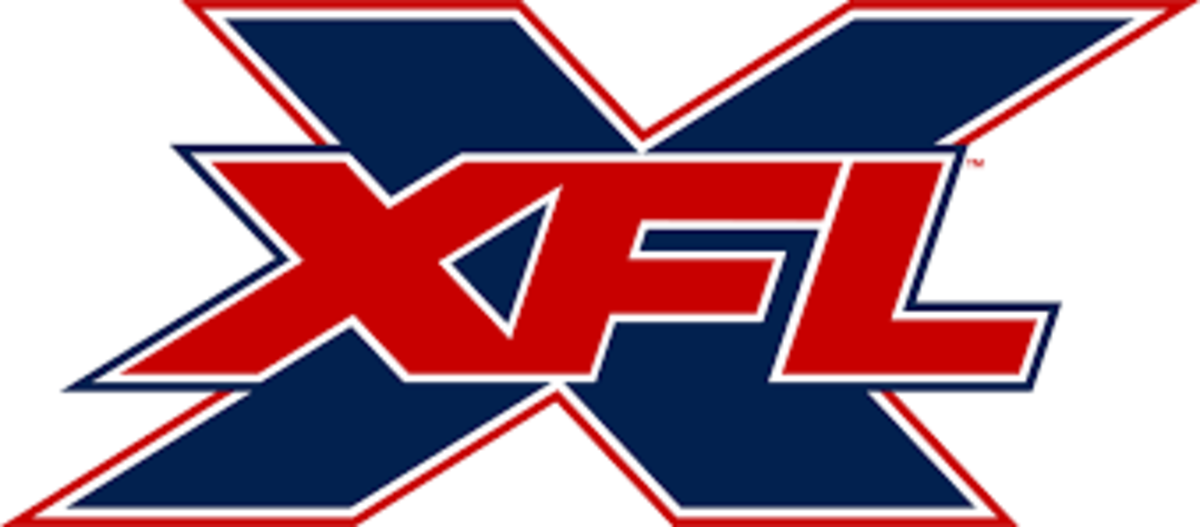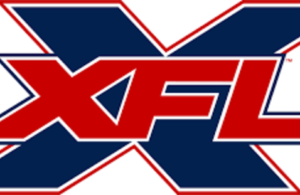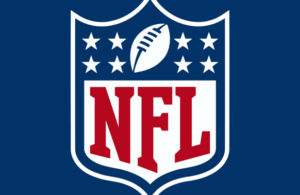- Taylor Swift – Style – Qwanny’s Version | Q3 Media Super Bowl Ad
- 10 Greatest Wide Receivers that NEVER Won a Super Bowl
- 10 Best Christmas Day Performances in NBA History
- The Beast: The Final Fight | Documentary | A Qwality Film
- The Beast: The Final Fight Trailer
- The Crush Podcast: Broncos Lose Again, Kelce the Clout Chaser
- Qwality Sports: Ben Gordon Interview, Talks Time in NBA and His Workout Mindset
- AFC South Sports Betting Preview
- UFC London Aspinall vs Blaydes
- Take A Guess: The Sports Trivia Game Show Hosted by DeQwan Young | Episode 29
XFL Rules, Examined
- Updated: January 30, 2020

The XFL has announced the rules of their game, intending it to be more fast-paced than the NFL. The full list of rules can be found here.
Kickoffs
The rules:
- The kicker kicks from the 25-yard line and must kick the ball in the air and in play between the opponent’s 20-yard line and the end zone.
- The coverage team lines up on the return side 35-yard line and the return team lines up on the 30-yard line. Each team must have exactly 3 players outside the hash marks on both sides of the ball and cannot move until the ball is caught by the returner.
- Out of bounds kicks and kicks that fall short of the 20-yard line will result in an illegal procedure penalty, taking the ball all the way out to the kicking team’s 45 yard line.
- Players can move when the ball is touched by the returner or 3 seconds after the ball touches the ground (when the official waves his hand down).
- If the ball is kicked into the end zone and is downed it is a “Major” touchback and the ball is placed at the return side 35-yard line.
- If the ball bounces in bounds and then out of the end zone or is downed in the end zone, the ball is placed at the return side 15-yard line.
- If a player on the return team touches the ball and it goes out of bounds, the ball is spotted where it went out of bounds.
- If a team wishes to run an onside kick, it must indicate this to the official before the play and the two teams will be permitted to line up using traditional NFL rules (i.e. 10 yards apart from the kicking team). There will be no surprise onside kicks.
The analysis: The idea here is to keep kickoffs a part of the game, as kick returns can be some of the most exciting plays in the game, but also make them safer, as they can also be some of the most dangerous plays in the game. However, in trying to keep one exciting play in the game, they’ve taken out another: the surprise onside kick.
The verdict: Meh
PATs
The rules:
- After a touchdown, the team has the option of running a play from the 2, 5, or 10-yard line, worth 1, 2, or 3 points respectively. The team must run an offensive play and no kicking plays are allowed.
- If the defense is able to cause a turnover and return the ball to the opponent’s end zone, the resulting score is equal to the number of points the offense was attempting to score on its PAT.
The analysis: This is a better version of what the AAF did. I wonder if there was any data analysis done on the scoring rates of plays from different spots. I would guess no, as 2, 5, and 10 are sort of standard spots. Two-point conversions are converted at about a 60% rate in the NFL; I would have liked to see an option that’s more of a sure thing than that. That said, that’s really only because we’re all used to watching football where a TD is usually 7 points.
The verdict: Interesting. Let’s see where it goes.
Punting
The rules:
- Punting team cannot release past the line of scrimmage until the ball is kicked.
- Gunners must line up at the line of scrimmage and are permitted to move laterally once the ball is snapped until it is kicked.
- Defenders over the gunner cannot cross the line of scrimmage until the ball is kicked.
- If the ball goes out of bounds inside the 35-yard line, it is a “Major” touchback and the ball goes to the 35-yard line.
- If a punted ball lands in the opponent’s end zone or goes out of the end zone the result is a “Major” touchback, and the ball goes out to the 35-yard line.
- Fair catches are permitted (though disincentivized – see Rationale)
The analysis: The league wants to encourage going for it on fourth downs and punt returns if teams do punt, but this is way, way more convoluted than it needs to be. Just use the CFL rules: no fair catches, 5-yard halo, 15-yard penalty for encroaching on that halo on balls caught on the fly, 5-yard penalty if it’s on the bounce, if the ball goes out of bounds on a punt between the 20s, the return team can take it where it went out plus a 10-yard penalty or march the kicking team back 10 yards and make them re-kick. It doesn’t encourage going for it on fourth down the same way, but you know what, playing the field position game should be part of the game. If Vince wanted to get rid of all defensive strategy, he should’ve just bought the Arena League and been done with it. While we’re on the topic of Canadian rules the XFL should have adopted: rouges. A ball kicked into the end zone that doesn’t come out gives the kicking team one point.
The verdict: Hate it. Hate everything about it.
Double forward pass
The rule:
- If a team completes a forward pass behind the line of scrimmage, that team may throw a second forward pass, as long as the ball has at no time crossed the line of scrimmage.
- Once the ball has passed the line of scrimmage, no forward passes are permitted.
The analysis: Why only two? Why not let teams throw forward as many times as they want until the ball crosses the line of scrimmage. Anyway, this is exactly the kind of inventive rule a league like this should have.
The verdict: Love it.
Overtime
The rules:
- Overtime shall consist of 5 “Rounds”, staged in alternating single-play possessions as is customary in NHL shootouts or MLS penalty kicks. A “Round” will consist of one offensive play per team. Each possession starts at the opponent’s 5-yard line and the offensive team has one play to score. The team with more points after 5 rounds is the winner.
- If a team has been mathematically eliminated before all 5 rounds have been completed, the game ends immediately (e.g. If Team A scores on its first 3 attempts and Team B is stopped on its first 3 attempts, then no subsequent plays are necessary).
- If teams are tied after 5 rounds, then rounds continue until one team is leading at the conclusion of a round, and that team will be the winner.
- For scoring purposes, each successful overtime score is worth 2 points.
- The defensive team cannot score. If the offensive team commits a turnover, the play is over immediately.
- If the defensive team commits a penalty, the offensive team will be allowed to re-attempt from the 1-yard line.
- Any subsequent penalty committed by the defensive team on any subsequent play, including in future rounds, will result in a score awarded to the offensive team.
- If the offensive team commits a pre-snap penalty, the ball will be moved back from the original spot, pursuant to regular rules and the play will be re-attempted.
- If the offensive team commits a post-snap penalty, the play will end and no score will be awarded.
- There will be a minimum of 20 seconds between plays with the ball-spotting official working in conjunction with TV and Official Review to signal when the next play begins.
The analysis: Another one that’s way too convoluted and gimmicky. Use the college system, but start at the 35 or 40 instead of the 25. Play at least two rounds that way. That opens up some interesting decisions on PATs, too.
The verdict: Hate it.
Play clock
The rule:
- We will implement a 25-second play clock that begins after the ball is spotted for the next play.
- It takes 7 seconds on average to spot the ball (average 32 second play clock)
The analysis: Similar to the CFL rule.
The verdict: Fine.
Comeback period
The rules:
- Occurs after the 2-Minute Warning in each half.
- On plays that end in the field of play, the game clock will be stopped until the ball has been spotted and 5 seconds have run off of the play clock.
- On incomplete passes and out of bounds plays, the game clock will stop completely until the ball is snapped.
The analysis: Another one for the convoluted pile. Another one where the CFL rule would have been fine: stop the clock until the ball is spotted. The 5 seconds coming off the play clock is unnecessary.
The verdict: Seriously, has nobody in the XFL office heard of the CFL?
Running clock
The rules:
- Outside the last 2 minutes of each half, the game clock will run after incompletions and out of bounds plays.
- Aside from incompletions and out of bounds plays, game clock rules outside the last 2 minutes of each half are the same as the NFL.
The analysis: This is exactly the CFL rule.
The verdict: Fine.
Timeouts
The rule:
- Each team will have 2 one-minute timeouts per half.
The analysis: Can Vince McMahon start a basketball league? This is the kind of thinking we need in basketball. Football? We’ll see. Given the XFL’s timing rules, 2 timeouts per half seems fine.
The verdict: TBD, but probably fine.
Replay
The rules:
- The XFL will have no coaches’ challenges and all plays will be subject to review from the Replay Official, who will be stationed in a booth above the field.
- Reviewable plays are limited to: (a) Plays involving possession. (b) Plays involving touching of either the ball or the ground. (c) Plays governed by the goal line. (d) Plays governed by the boundary lines. (e) Plays governed by the line of scrimmage. (f) Plays governed by the line to gain. (g) Number of players on the field at the snap. (h) Game administration. (1) Penalty enforcement. (2) Proper down. (3) Spot of a foul. (4) Status of the game clock. (i) Disqualification of a player. This list of reviewable plays is identical to those in the NFL prior to 2019.
- Exception: The Replay Official may correct obvious errors involving player safety at any point throughout the game.
- Exception: The Replay Official may correct any egregious obvious error that may have a significant impact on the outcome of the game in the last five minutes of the 4th quarter or during overtime.
The analysis: If they’re actually going to correct bad penalty calls, then this is not only good, but better than the NFL.
The verdict: TBD.
Catch rule
The rule:
To catch a ball means that a player:
- Secures control of a live ball in flight before the ball touches the ground.
- Touches the ground in bounds with any part of his body, and then
- Maintains control of the ball long enough to enable him to perform an act common to the game, i.e., long enough to pitch or hand the ball, advance it, avoid or ward off an opponent, etc.
The analysis: College rule.
The verdict: Fine.
Officials
The rule:
There will be a dedicated Ball Spotting Official who will solely be responsible for quickly spotting the ball and getting a new ball after each play.
The analysis: Doesn’t seem like a game changer one way or the other. Carry on, I suppose.
The verdict: Whatever.
In-helmet headsets
The rule:
- While still in development, the goal is for select offensive players to have a Coach-to-Player helmet receiver.
- The Coach-to-Player system would allow a member of the coaching staff in the bench area or the coaches’ booth to communicate to a player through a speaker in his helmet.
- Broadcast partners would have access to this communication and may use it during the game.
The analysis: How is this in development? The NFL has had it figured out for some time now.
The verdict: Make it happen, Vince.
Linemen downfield
The rule:
No ineligible player shall be or have been more than three yards beyond the line of scrimmage until a passer throws a legal forward pass that crosses the line of scrimmage. A player is in violation of this rule if any part of his body is beyond the three-yard limit.
The analysis: Basically the college rule.
The verdict: Fine.
Halftime
The rule:
10-minute break, then back to the action.
The analysis: This should probably be longer. The players can use the break and the fans in the stadium can use the time to hit the restrooms and concession stands.
The verdict: No bueno.
Twitter: @KSchroeder_312

